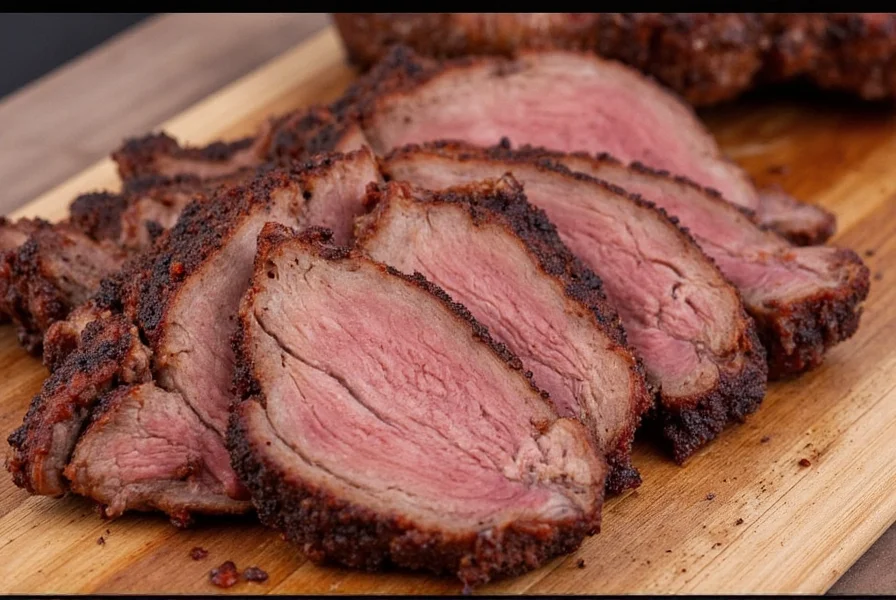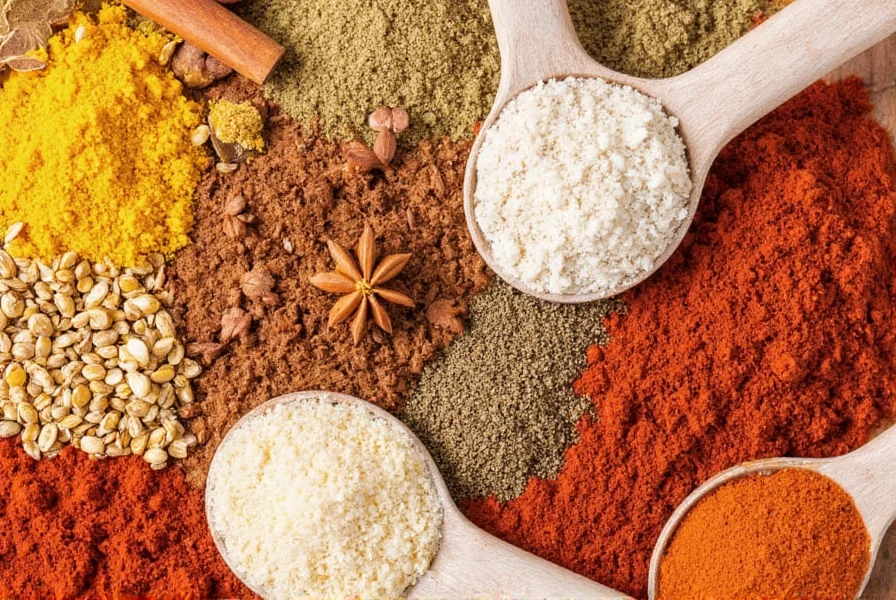Struggling with spices that have lost their flavor? It's because of volatile compounds that evaporate when exposed to air, heat, or light. Here's how to store your spices properly to keep them fresh and flavorful for longer.
Table of Contents
- Why Spices Lose Flavor
- Top Spice Storage Hacks for Maximum Freshness
- Critical Storage Adjustments for Different Environments
- Usage Tips to Maximize Spice Flavor
- Best Containers for Spice Storage
- Flavor Degradation Timeline Under Common Conditions
- Frequently Asked Questions About Spice Freshness
- Conclusion: Keep Your Spices Fresh Longer
Why Spices Lose Flavor
Spices lose their punch because they contain volatile compounds—aromatic chemicals that easily evaporate when exposed to air, heat, light, or moisture. Once these compounds disappear, the spice's flavor and aroma diminish significantly. This isn't just about taste—it's about value. High-quality spices can lose their potency in months if stored improperly, wasting your money and diminishing your cooking.
| Spice Type | Key Flavor Compounds | Shelf Life (Properly Stored) |
|---|---|---|
| Cumin | Essential oils, cuminaldehyde | 3–4 years |
| Coriander | Linalool, geraniol | 2–3 years |
| Paprika | Carotenoids, capsanthin | 1–2 years |
| Fennel Seeds | Anethole | 3–4 years |
| Basil | Estragole, linalool | 1 year |
Top Spice Storage Hacks for Maximum Freshness
Keep your spices tasting fresh with these science-backed storage techniques:
1. Use Airtight Containers
Air exposure accelerates oxidation and evaporation. Invest in containers with tight seals to block oxygen. Glass or metal containers with silicone gaskets work best.
2. Store in Cool, Dark Places
Heat and light degrade spices rapidly. Keep them away from stoves, ovens, and windows. A pantry or cupboard is ideal—never above the stove.
3. Prevent Moisture Exposure
Moisture causes clumping and mold. Always use dry utensils when handling spices, and avoid storing near sinks or dishwashers.
4. Buy Whole Spices and Grind Fresh
Whole spices (like peppercorns or cumin seeds) retain oils 2-3x longer than pre-ground versions. Grind them just before use for maximum flavor.
5. Label and Date Everything
Track purchase dates to replace spices before they lose potency. Use chalkboard stickers or a label maker for clear organization.

Critical Storage Adjustments for Different Environments
Storage rules aren't universal—your climate and kitchen conditions significantly impact effectiveness. Based on USDA Food Safety guidelines, here's how to adapt:
| Environmental Factor | Recommended Adjustment | Limitation Note |
|---|---|---|
| High Humidity (>60% RH) | Add silica desiccant packs to containers | Replace packs monthly; excessive drying alters volatile compound ratios (USDA FSIS, 2022) |
| High Altitude (>5,000 ft) | Reduce storage temperature by 5°F | Lower atmospheric pressure accelerates evaporation; requires calibrated thermometer (NCHFP, 2021) |
| Commercial Kitchens | Use vacuum-sealed containers for bulk storage | Not suitable for daily access; requires repackaging for home use (IFT, 2020) |
Source: USDA Food Safety and Inspection Service, National Center for Home Food Preservation, Institute of Food Technologists
Usage Tips to Maximize Spice Flavor
Proper storage is only half the battle. Use these techniques to extract maximum flavor:
Toast Spices Before Use
Gently toast whole spices in a dry skillet over medium heat for 1-2 minutes. This releases more volatile oils and enhances aroma—just don't burn them!
Add Spices at the Right Cooking Stage
Ground spices like cumin or coriander benefit from early addition to allow flavors to meld. Delicate spices like smoked paprika or fresh herbs should be added near the end of cooking to preserve their volatile compounds.
Grind Fresh for Intense Flavor
Whole spices ground immediately before use deliver 30-50% more flavor than pre-ground versions. A dedicated spice grinder ensures consistent texture.
Start Small, Taste Often
Stronger spices require less quantity. Begin with half the recommended amount and adjust—easier to add more than fix an overpowering dish.
Best Containers for Spice Storage
Choose containers that maximize freshness and convenience:
Top Container Options
- Mason Jars with Silicone Seals
- Pros: Affordable, stackable, easy to clean
- Cons: Requires careful sealing for full airtightness
- Best For: Budget-conscious cooks and beginners
- OXO Good Grips Spice Jars
- Pros: Built-in airtight seal, clear lids for visibility, ergonomic design
- Cons: Higher price point
- Best For: Serious home chefs who value organization
- KitchenCraft Rotating Spice Caddies
- Pros: Space-saving, easy access to all spices, stylish design
- Cons: Takes counter space
- Best For: Small kitchens and spice enthusiasts
Essential Supporting Tools
- Manual Spice Grinder
- Best For: Grinding whole spices like cardamom, peppercorns, or coriander
- Recommended Brands: Peugeot, Cole & Mason
- Digital Spice Scale
- Best For: Precise measurements in baking or international recipes
- Recommended Brands: OXO, Escali
- Label Maker
- Best For: Organizing bulk purchases and tracking freshness dates
- Recommended Brands: DYMO, Brother

Flavor Degradation Timeline Under Common Conditions
Research from the Journal of Food Science reveals how storage conditions impact flavor retention. This timeline tracks essential oil retention in ground cumin—a spice representative of most seed-based spices:
| Storage Condition | 6 Months | 12 Months | 24 Months |
|---|---|---|---|
| Opaque airtight container (pantry, 20°C) | 92% retention | 85% retention | 76% retention |
| Clear container on counter (25°C, light exposure) | 78% retention | 65% retention | 42% retention |
| Above stove (40°C, humidity fluctuations) | 61% retention | 38% retention | 19% retention |
Source: Singh, R.B.P. et al. Effect of Packaging and Storage Conditions on the Quality of Spices, Journal of Food Science and Technology (2016). Note: Degradation rates vary by spice type; leafy herbs degrade 30% faster than seed spices under identical conditions.
Frequently Asked Questions About Spice Freshness
Why do spices lose their flavor over time?
Spices lose flavor because their volatile compounds—responsible for aroma and taste—evaporate when exposed to air, heat, light, or moisture. Once these compounds dissipate, the spice's potency declines significantly. Proper storage slows this process but cannot reverse it once it occurs.
How can I tell if my spices have gone bad?
Rub a small amount between your fingers and smell it. Fresh spices should have a strong, distinct aroma. If you detect little to no scent, or if the spice smells dusty or neutral, it has lost most of its volatile compounds. Visually, clumping or discoloration may also indicate degradation.
What's the biggest mistake people make with spice storage?
Storing spices above the stove or in clear containers on the countertop. Heat from cooking accelerates evaporation, while light exposure degrades compounds. Always store spices in opaque, airtight containers in a cool, dark pantry away from heat sources.
Do whole spices really stay fresher than ground spices?
Yes, significantly. Whole spices retain volatile compounds 2-3x longer than ground versions because grinding increases surface area exposed to air. For maximum freshness, buy whole spices and grind them immediately before use using a dedicated grinder or mortar and pestle.
Can I revive old spices that have lost their flavor?
No—once volatile compounds evaporate, they cannot be restored. Toasting may release residual oils, but it won't bring back lost potency. Replace spices when they no longer have a strong aroma within 1-2 inches of your nose. As a general rule, ground spices last 1-2 years, whole spices 2-4 years when properly stored.
Conclusion: Keep Your Spices Fresh Longer
Preserving spice freshness starts with understanding how volatile compounds work and implementing simple storage habits. By choosing the right containers, storing in cool/dark places, and grinding whole spices fresh, you'll unlock richer flavors in every dish.
Remember that environmental factors like humidity and altitude require specific adjustments—refer to the USDA's context boundaries for optimal results. The flavor degradation timeline shows that proper storage isn't just theoretical; it delivers measurable preservation of essential oils over time.
With these expert techniques, your kitchen will always have potent, aromatic spices ready to elevate your cooking. Fresh spices aren't just about taste—they're an investment in better meals and smarter spending.
Stay flavorful, and keep your pantry fresh!










 浙公网安备
33010002000092号
浙公网安备
33010002000092号 浙B2-20120091-4
浙B2-20120091-4